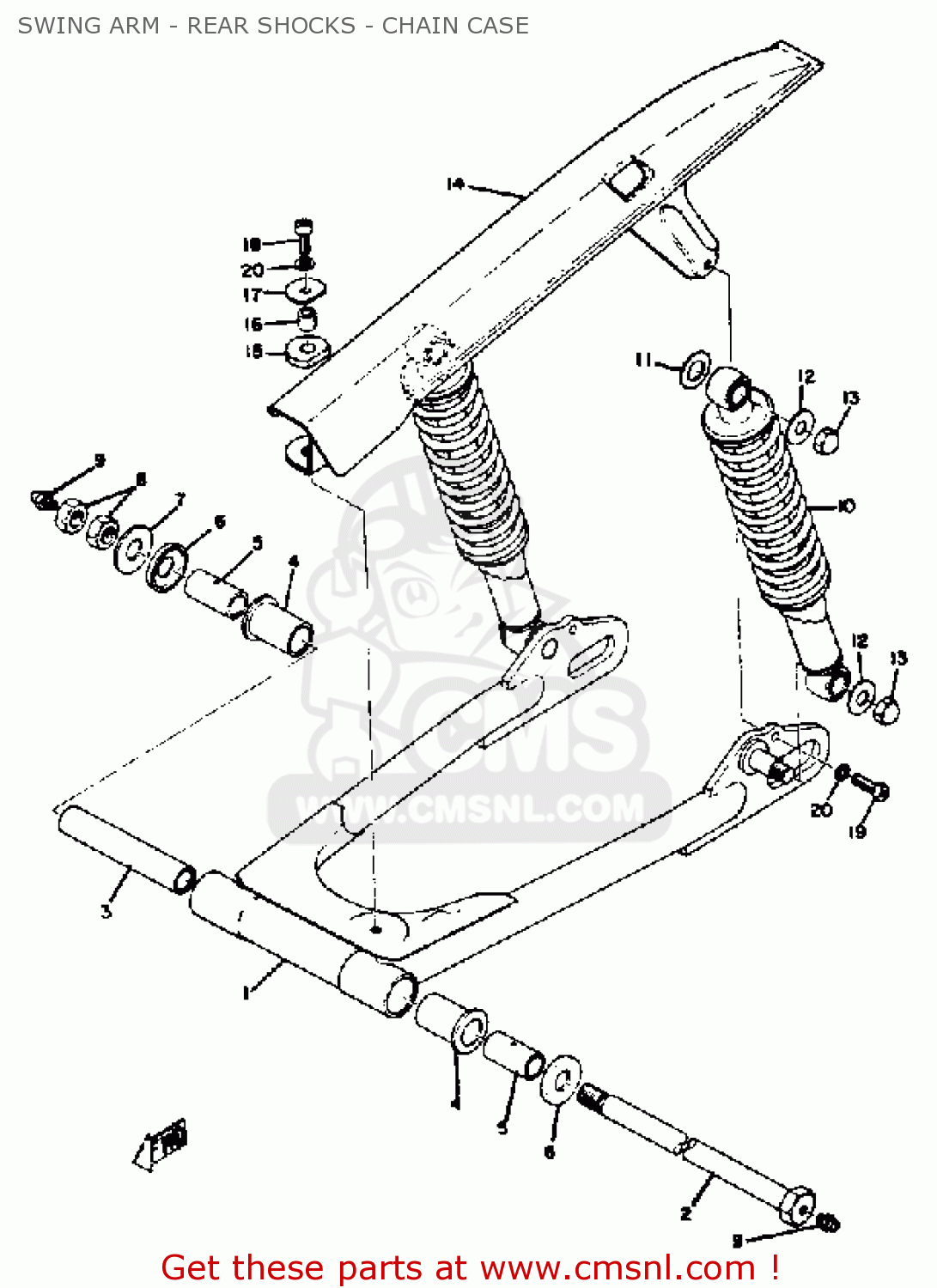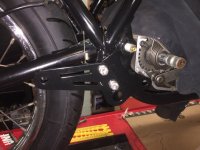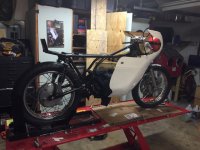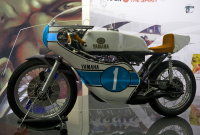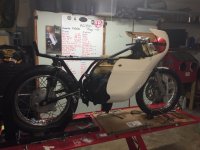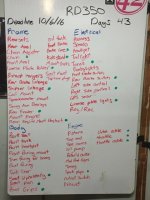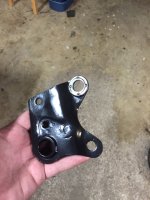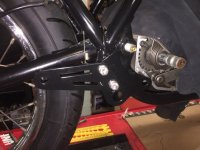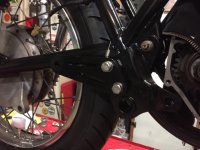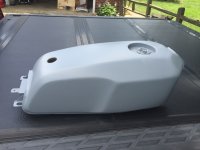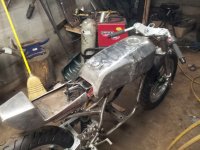Re: First Vintage Race Inspired Smoker
Thanks for all the info, I ordered a small brake hone right after I mentioned that. The rear peg mounts are still there (though not the peg part) as im using the stock rear brake lever.
So, are you saying that the outter bearing should be snug up against the frame without
jpmobius said:A brake cylinder hone should work fine and be easy to find and cheap. Be careful not to over do it. Realize that the assembled bolt, inner bushings, spacer and end caps are an integral structural component of the frame once tightened down. The swing arm simply pivots around the inner bushings which take up the tangential play and the shims take up all the axial play so the arm can't slide back and forth between the two sides of the frame. If you put it all together without the swingarm and tighten it down you'll see how all the parts make up a precision internal bearing for the arm and that the bolt simply clamps them all together. I don't know if the 650 bolt is the same length or not, but don't see any advantage using the larger same diameter nut. Also, don't misinterpret the two nuts found stock on the RD's. I've had people tell me that you are supposed to tighten the first one down to snug and then lock it with the second nut which is incorrect. The second nut is only a jamb nut intended as a safety feature to make sure the first one doesn't fall off. Rather silly I think as there is no likely hood that it should come loose - there is no rotation of the assembly and the swing arm bolt and nut get tightened fair down clamping everything together very tight to the frame. Yamaha makes a same pitch nut for a later model bike that has a spring plate insert making it a lock nut which I like to use instead of the two nuts (sorry I don't know the part number), but a bit of locktite on a single nut should be fine. You could also drill it for a cotter pin if you wanted. You will also need some spacers to take up the space normally taken up by the passenger peg/exhaust mounting brackets if you remove these parts.
Thanks for all the info, I ordered a small brake hone right after I mentioned that. The rear peg mounts are still there (though not the peg part) as im using the stock rear brake lever.
So, are you saying that the outter bearing should be snug up against the frame without


